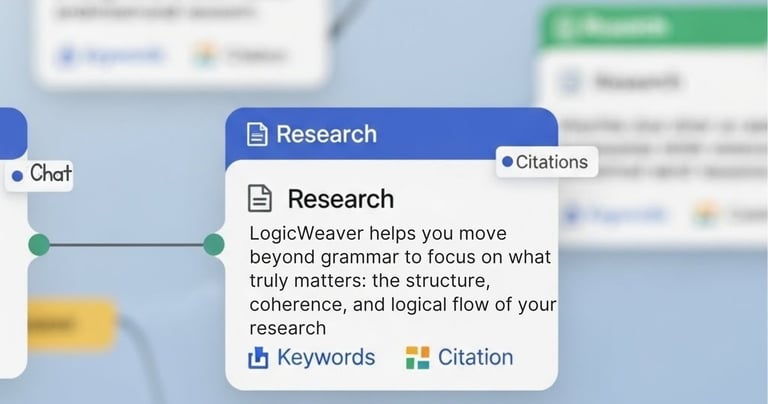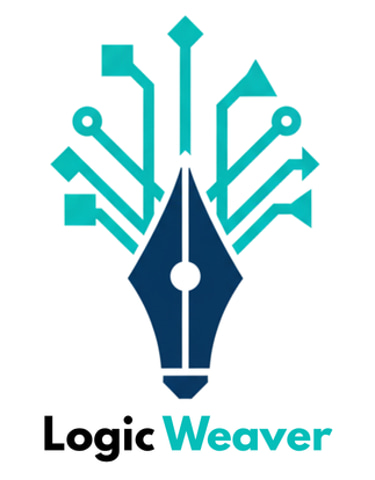Logicweaver: Visual Research Planning Studio
Design, stress-test, and refine your research logic on an interactive canvas—before you ever open a word processor.


LogicWeaver is your digital design studio for academic projects. Instead of wrestling with long, linear documents, you build your research plan as a network of connected nodes: problem, gap, aims, questions, methods, datasets, and key references.
At each step, an integrated AI assistant helps you clarify concepts, compare alternatives, and make decisions you can justify. Every suggestion you accept becomes a traceable node on the canvas, preserving your intellectual ownership and the evolution of your ideas. The result is a transparent, supervisor-ready research plan that you can export, share, and keep refining throughout the project.
Anchor your project with four core nodes
Start by defining the problem or gap, aim and objectives, research questions or hypotheses, and a working title. LogicWeaver keeps these “foundation nodes” visible so that every later decision aligns with them.Co-create a rigorous research structure with AI
Use three entry modes—Build from scratch, Use a template, or Co-create with AI. Ask the assistant to propose alternative aims, rephrase research questions, or suggest methods that fit your data and constraints. You stay in control; the AI simply expands the space of options.See the logic of your project, not just the text
Rearrange nodes, group related ideas, and highlight key dependencies on the canvas. The structure makes gaps, contradictions, or overloaded sections visible immediately, long before peer reviewers see them.
What you can do with LogicWeaver
Run fast “health checks” on your research design
Automated checks scan your main nodes and their connections, flagging issues such as misaligned questions and methods, unclear contributions, or weak links between claims and evidence. These checks are designed to mirror how experienced supervisors and reviewers think.Organize references and evidence as you go.
Add key papers and datasets directly to the relevant nodes. A built-in references panel helps you keep track of what you have read, what you still need to consult, and how each source supports specific claims.Export clean, structured outputs
Generate outlines, memos, and supervision reports in formats such as DOCX, PDF, or Markdown. Each export keeps the logic of your canvas intact, making it easier to transform your plan into chapters, sections, and draft articles.
